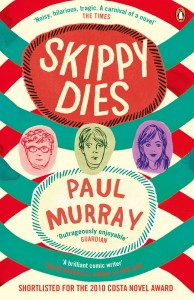NOTE: This article was originally published in the Irish Independent Written Word Supplement, March 2014.
It can be difficult to wrap your head around the difference between writing an article for publication and writing a speech to be delivered to a live audience. In order to help you to grasp the difference, I’ve taken the same topic, used the same structure and made the same points, but one is an opinion piece for publication in a newspaper and the other is a speech. Read them both and then play a game of SPOT THE DIFFERENCE…
IT’S MY BODY AND OTHER LIES
Mia Murphy
[*Mia Murphy is a lawyer, a journalist & a human rights activist. She blogs at www.freedomfightersireland.ie or you can find her on facebook/freedomfightersireland or twitter @miamurphy]
We live in an era of unprecedented individual freedom. Unhappy with your parents? Divorce them. With your gender? Change it. With your life? End it.
The question begs to be asked however: is unlimited personal freedom a good thing for society? The answer, resolutely, is no. We are too eager to glorify people’s right to choose, too willing to ignore the reality that many people’s choices are often limited or foolish or self-destructive. In the very worst cases they are sometimes all three. So despite my fond notion that I am free to do what I want, in reality I know that my freedom is in many ways a construct of a good education and a well paid job. Without these two pillars of security in my life, my ‘choices’ might look very different indeed.
Let’s consider, for example, the idea “it’s my body and I should be allowed to do what I want with it”. At the simpler end of the spectrum, I can decide to shave my hair off for charity. I won’t really be hurting anyone – or myself – because the hair will grow back. Slightly more complex might be my decision to donate a kidney to a family member or friend. I get the warm fuzzy glow of saving a life, and hey, it turns out most people can survive perfectly fine with just one kidney! So even though it won’t grow back the way my hair did, who cares? Perhaps I could use my body as an incubator, could carry a baby for my fertility-challenged sister, or for my gay brother and his partner? There is no greater gift on earth than to give someone who would otherwise be childless the opportunity to experience the joys of parenthood.
So the freedom to do what I want with my body is a good thing, right?
Well only if I remain resolutely blind to the selfless utopian bubble I’ve created above, where motives are always pure and bodies and minds remain unharmed by the choices we make. This is simply not true. Many people sacrifice parts of themselves they would much rather keep sacred, through economic necessity. To really understand a person’s level of individual freedom, what matters is not so much what we do but rather why we do it.
Hair these days is big business. If I’ve got long locks, I can sell my ponytail for about €100. If my hair is blond, the rarest shade, I’ll get closer to €1000 for it. The hair extensions industry in Ireland alone is estimated by Hallinan Beauty Group to be worth about €2.5 million and significantly the vast majority of it is imported from abroad. But where does this hair come from? In most cases, it’s shave or die of the worst kind, where women in India, China and Eastern Europe sell their hair to stave off hunger and poverty or to pay for a better education for their children. In a world where long hair is still the benchmark of female beauty, this isn’t about personal freedom, this is about lack of options, lack of money, lack of choice. Or to be more precise, so that women in the developed world can feel beautiful, can have the ‘free choice’ to wear someone else’s hair and pass it off as their own, women in the developing world are making the not-so-free decision to privilege food, shelter and education over their own ‘beauty’. They are every bit as selfless as the wealthy westerner who shaves their hair off for charity but they are entitled to feel bitter that extreme poverty makes this not a choice but a necessity.
The freedom to do what I want with my internal organs is even more fraught with difficulties. Of course I can – and should – carry an organ donation card with me. If I die before my time, I might as well give my body parts to someone who can use them. But what about auctioning off my organs to the highest bidder whilst I’m still alive? Again, the issue of poverty, necessity and sometimes just plain old stupidity and greed raises its head, as a recent case in China illustrates, where a 17 yr old teen secretly sold a kidney for €3,500 before admitting to what he had done when his mother questioned how he could suddenly afford to buy a laptop, iPad and iPhone. His actions were not just a case of consumerism gone mad but were also unwittingly self-destructive, as his remaining kidney was subsequently revealed to have limited function. Ironically, he now finds himself on the organ donor waiting list alongside 1.5 million others, the organ shortage in China fuelling the very black market trade this boy fell victim to. Yes he made a free choice, but one he will undoubtedly regret for the rest of his life. What all of this reveals is that sometimes limiting people’s freedom is necessary in order to protect them from their own profound stupidity.
Nonetheless, there remain many miraculous things we can do with our bodies. Using them to create life is perhaps the greatest ability we have as human beings. We view the right to procreate as so fundamental that we are overwhelmed with sympathy for couples who are unable to conceive. Hence, many of us have no problem with the concept of surrogacy if the aim is to offer a childless couple the miracle of parenthood. However, once money enters the frame we become decidedly more squeamish. Is my body a commodity to be bought and sold? When I list my assets on my tax return, should I include my fully functioning womb? I can rent it out for maybe €15,000 per pregnancy. Heck, that’s more money than I’d get on the dole! Yet the emotional, psychological and ethical fallout from surrogacy can be horrendous.
What if, as happened recently in the U.S., the baby has foetal abnormalities? Can the surrogate be forced to abort the baby if the genetic parents decide they only want a ‘healthy’ child? If the surrogate falls ill, can she be forced to continue with the pregnancy against her will? Even if we put these relatively rare scenarios aside for a moment, the inconvenient truth is that most commercial surrogacy arrangements take place in poor countries where there is little regulation, countries like Thailand, Uganda and the Ukraine. Baby factories have sprung up all over India where the industry is worth $2bn and where estimates suggest 25,000 babies a year are born to surrogates. Many women are ashamed of their decision, hiding it from their existing children and in-laws but are lured in by the monetary reward which will give them a roof over their head or pay for an existing child’s education. It also carries less of a stigma than prostitution. However, despite the illusion that it is safer, many surrogates are risking their lives. Maternal mortality remains high in India, with 56,000 women dying during pregnancy or childbirth. Yet these women are being exploited, receiving only 10% of the amount being paid by commissioning couples and signing contracts waiving their right to health care in the case of miscarriage or complications after the birth.
We still live in a world where “all animals are equal, but some animals are more equal than others” so the next time you hear the defence “it’s my body and I’ll do what I want with it” spare a thought for those who use their bodies for profit because they are the only item of value they possess.
—
*NOTE: Thanks to a colleague for pointing out that it’s important to be aware of and discuss with students the way that the opening series of rhetorical questions “We live in an era of unprecedented individual freedom. Unhappy with your parents? Divorce them. With your gender? Change it. With your life? End it.” are deliberately facetious and are designed to provoke and shock. Of course none of us actually believe that anyone changes gender or takes their own life lightly but journalists often say something shocking or controversial to grab people’s attention.
*NOTE: some of the statistics I included I simply made up. Real journalists obviously can’t do this, but as a student in an exam without access to google, you’ve got no choice. You’ll have to make things up. You may also decide to exaggerate for dramatic effect. For example, the story about the 17yr old selling his kidney is true but I invented the subsequent kidney failure to add dramatic irony to the situation.I made up the name of the journalist so any resemblance to anyone real is entirely coincidental.
Now…
To help you to appreciate the stylistic difference between writing an article and writing a speech, I used the same topic, same structure, same ideas but transformed it into a speech.
Your task is to SPOT THE DIFFERENCES between them (we’ve identified 8 in total but there may be more…)
Speech on Personal Freedom
Hi everyone, you’re very welcome to the Docklands Theatre for this lecture series and can I just say, I really appreciate the effort you’ve all made to be here. The bad weather probably had you jumping over muddy puddles outside like a possessed Peppa Pig, but you’re here now, so relax, kick your shoes off if they’re wet, switch off your phone and we’ll begin! For those of you I haven’t met before, my name’s Mia Murphy and if you’re tweeting this event I go by the not very cryptic twitter handle @miamurphy. I’m a journalist with the Irish Independent & a human rights campaigner and I’ve spent the last seven years of my life studying the way our freedom in the Western World limits the freedom of people in the Developing World.
We live in an era of unprecedented individual freedom. If you’re unhappy with your parents, you can divorce them. If you (point to someone in the front row) are unhappy with your gender (pause for laughter) – and I’m not suggesting you are, cause you look pretty good as a guy to me! – but if you were, you could just pop into a hospital and sort that out! Boom! You go from Phillip to Philomena in a heartbeat!
But what bugs me about all of this is the assumption that unlimited personal freedom is a good thing for society. That we’re all better off cause we can do what we want. I don’t buy that personally. I think we’re too eager to glorify people’s right to choose and we’re far far too willing to ignore the reality that people’s choices are often limited & foolish & self-destructive. While I might like the notion that I’m free to do whatever I want, the truth is that my freedom is guaranteed because I’ve got a good education and I live in a rich country.
One idea in particular that fascinates me is the statement you often hear people saying when they’re getting a body piercing or dying their hair purple: “it’s my body and I should be allowed to do what I want with it”. And I know that can sometimes be a good thing! I can shave my hair off for charity. I can donate a kidney to a family member. I can even be a surrogate for my sister if she’s having trouble getting knocked up and I’ll definitely help out my gay brother and his partner if they want kids because no matter how hard they try, they are definitely not gonna get pregnant!
The sad truth is, though, that lots of people shave their hair off and donate kidneys and act as surrogates for one very simple reason, and that reason is money!
How many of you know that hair these days is big business? I’ve got long brown hair (grab ponytail & wave it at audience) so I can sell my ponytail for about €100. But if my hair was blond, like this lovely lady in the front row (point) – would you mind standing up? – would you believe she could sell her hair today for €1000? So if you see her on the street next week and she’s doing an Emma Watson, you know what she’s been up to! And you should ask her to buy you coffee, cause she’s got €1,000 in her back pocket!
Seriously though, let’s talk about the real price of hair. The hair extensions industry in Ireland alone is worth about €2.5 million and the vast majority of this hair is imported from abroad. Women in India, China and Eastern Europe sell their hair to escape hunger and poverty and to pay for a better education for their children. This isn’t about personal freedom, this is about lack of options, lack of money and lack of choice. The sad truth is, so that you and I can feel beautiful with our flowing extensions like Kim Kardashian, women in the developing world are making the decision to privilege food, shelter and education over their own hair. And bear in mind that cutting their hair off means feeling ‘ugly’ for many of these women, because we’re not the only culture that associates long silky hair with sexiness you know!
You see this with organ donation as well! There was a case in China recently where a 17 yr old teenage boy secretly sold one of his kidneys for €3,500. But of course the mammy twigged that something was up when he could suddenly afford to buy a new laptop, iPad and iPhone and she forced him to admit what he’d done! Now this poor eejit didn’t need the money – he wasn’t starving – but I guess he wanted these signifiers of success pretty badly to go to this extreme. What he did was profoundly stupid, no question. But as yet there’s sadly no cure for stupidity in this world! Maybe that’s what my next research project should be! (pause for laughter)
Anyway, this kid then discovers that his remaining kidney has limited function! You won’t actually believe this but he’s now on the organ donor waiting list – I kid you not! – alongside 1.5 million others. And if this doesn’t prove that limiting people’s freedom is sometimes necessary to protect them from their own stupidity, I don’t know what does!!!
The last thing I want to mention, briefly, is surrogacy. Now I don’t have any moral qualms with a person deciding to be an oven for cooking up someone else’s baby, but it’s not as simple as setting the timer and waiting for the ping! I read about a case recently in America where at the twenty week scan, they discovered the baby had foetal abnormalities. The parents wanted the surrogate to have an abortion. But she didn’t agree with abortion, and she could already feel the baby kicking, so she refused. The baby was in her body but genetically the egg and sperm had come from the couple she was carrying it for. So they went to court looking for a court order to force her to have an abortion. And what did she do? She went on the run!
The point I’m making here is that it is never, never as simple as “It’s my body and I can do what I want with it”. Even leaving aside this extreme case, the truth is that most commercial surrogacy arrangements take place in poor countries where there is little regulation, countries like Thailand and Uganda and the Ukraine and India.
In fact, in recent years baby factories have sprung up all over India. The industry is worth $2bn and somewhere in the region of 25,000 babies a year are born to surrogates. But this is a country with poor hospital infrastructure. 56,000 women die during pregnancy or childbirth every year. Not only are they putting their lives at rick, they’re also being exploited. They only get about 10% of the amount being paid and they’re signing these awful contracts which mean that as soon as the baby is delivered, they have no right to any further medical care. So if they get sick or die, the couple who now have their beautiful new baby have no further responsibility towards this woman who has given them the gift of becoming parents. And for me, that it sick and that is wrong. (Pause)
I want to leave you with a quote from George Orwell’s Animal farm where he said that “all animals are equal, but some animals are more equal than others”. So the next time you hear someone say “it’s my body and I’ll do what I want with it” I want you to just spare a thought, please, for those who use their bodies for profit because they are the only item of value they possess.
(Step back and bow. Pause for applause)
Thank you so much for listening (bow, wave, exit stage).







